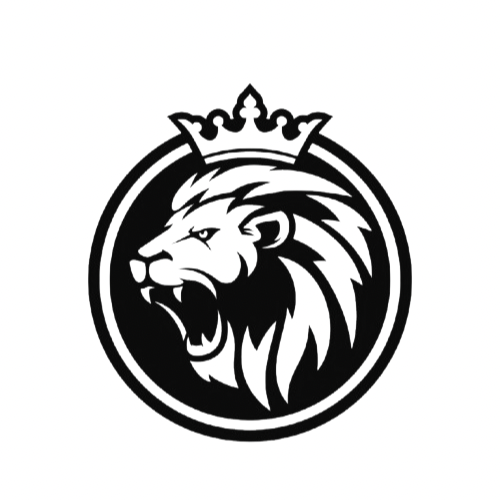#19: The Turkesterone-gate
ROAR aestheticShare
In the ever-evolving world of fitness supplements, few compounds have captured attention as rapidly and polarizingly as turkesterone. Marketed as a natural anabolic agent with steroid-like effects but without the side effects, turkesterone is hailed by some as a muscle-building breakthrough—and dismissed by others as just another trend in a saturated industry.
But what does the science actually say? Who are the notable voices shaping the narrative? And where does public perception stand today?
What Is Turkesterone?
Turkesterone is an ecdysteroid, a class of steroid hormones found in insects and some plants, most notably Ajuga turkestanica, from which it gets its name. Unlike anabolic-androgenic steroids (AAS), ecdysteroids do not bind to androgen receptors, meaning they don’t carry the same hormonal risks.
Despite being plant-based, turkesterone has been credited with increasing muscle protein synthesis, enhancing endurance, and improving recovery. Many enthusiasts call it a “natural steroid alternative” that doesn’t require post-cycle therapy (PCT), liver support, or risk hormonal suppression.
Scientific Evidence: What We Know
The core of the turkesterone debate lies in its limited but intriguing scientific research.
Animal and In Vitro Studies
- A 2000 study by Syrov et al. showed that turkesterone stimulated protein synthesis in rats and had anabolic activity comparable to methandienone (Dianabol), but without the androgenic effects.
- A 2015 study on mice found that ecdysteroids increased grip strength and skeletal muscle mass significantly—enough for the researchers to call for further study in humans.
-
A 2019 German study published in Archives of Toxicology stated:
“Ecdysterone has high anabolic potency, higher than DHT and metandienone in muscle hypertrophy models.”
Lack of Human Clinical Trials
Despite promising animal and cell-line studies, robust human clinical research is missing. One 2021 randomized trial conducted in Germany did find that ecdysterone supplementation increased lean mass and strength in resistance-trained males over 10 weeks. However, sample sizes were small and methodologies inconsistent.
Bottom line: Turkesterone shows promise, but claims of miraculous muscle growth need more human evidence.
Notable Figures: Who’s Talking About It?
Greg Doucette
The IFBB pro and YouTube fitness influencer was among the first big voices to review turkesterone critically. Doucette has consistently challenged the exaggerated marketing, saying:
“If you think turkesterone is going to turn you into a freaky bodybuilder without side effects, you’re dreaming. It’s not magic—it might help, but not like actual steroids.”
Dr. Andrew Huberman
While not a direct promoter of turkesterone, the Stanford neuroscientist has discussed ecdysteroids in the context of natural performance enhancers. He urged caution due to the lack of long-term safety data, especially for younger users.
Derek from More Plates More Dates
Perhaps the most influential voice in turkesterone’s rise, Derek helped popularize the supplement via detailed breakdowns on his YouTube channel. He partnered with Gorilla Mind to release a line of turkesterone products, sparking both interest and controversy.
He has since taken a more cautious tone:
“Turkesterone probably has some merit, but it’s not the game-changer people think it is. Anecdotal results vary wildly.”
Public Perception: Between Hope and Skepticism
The Hype Phase
In 2021–2022, turkesterone exploded in popularity on TikTok, Reddit, and YouTube. Terms like “natty steroid” and “legal gains” became buzzwords. Gym-goers touted their “clean gains,” with some swearing they gained 10 lbs of muscle in months.
Supplement companies capitalized on the demand, often charging $60–100 per bottle, despite murky ingredient sourcing and questionable standardization.
The Backlash
By late 2023, skepticism set in. More users reported no noticeable effects, especially compared to creatine or even protein supplements. As scrutiny increased, many supplements failed third-party testing—some containing no turkesterone at all, or substituted with cheaper, less effective ecdysteroids.
Forums like Reddit’s r/Supplements and r/NattyorNot began calling turkesterone “the SARMs of the natty world”—tempting, but ultimately overrated.
Bioavailability and Standardization Issues
One key issue is turkesterone’s poor bioavailability. Since it’s not easily absorbed by the body, even high doses may have limited effects. Liposomal or cyclodextrin-bound versions claim to improve this, but there’s little third-party data to support these claims.
Also, few manufacturers properly standardize for actual turkesterone content. What’s on the label often doesn’t match what’s inside.
Who Might Benefit?
While not a magic bullet, turkesterone may be worth experimenting with for certain individuals:
- Intermediate lifters looking for a minor edge in hypertrophy
- Athletes subject to drug testing, as turkesterone is currently not banned by WADA (as of 2025)
- Those seeking non-hormonal alternatives to SARMs or TRT
However, beginners and budget-conscious lifters are better off investing in proven basics: protein, creatine, sleep, and a structured training plan.
Turkesterone is not a scam—but it’s not a miracle either. Its promise lies in mild, safe, and possibly helpful anabolic effects. However, the current marketing far exceeds what the science justifies.
The Road Ahead
With growing interest in non-hormonal performance enhancement, turkesterone is unlikely to disappear. But for it to become a legitimate part of the supplement canon, we need:
- More human clinical trials
- Industry-wide standardization
- Realistic expectations set by influencers and brands
As always in the fitness world, the best supplement is consistency. Turkesterone might help—but only if you’ve already mastered your training, nutrition, and recovery.
